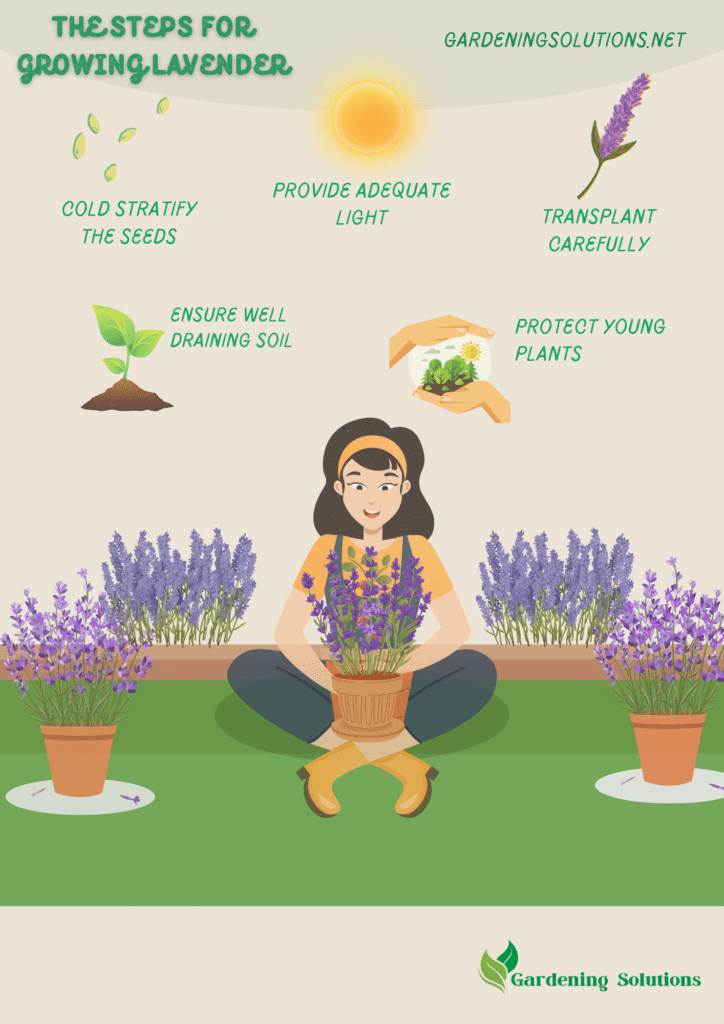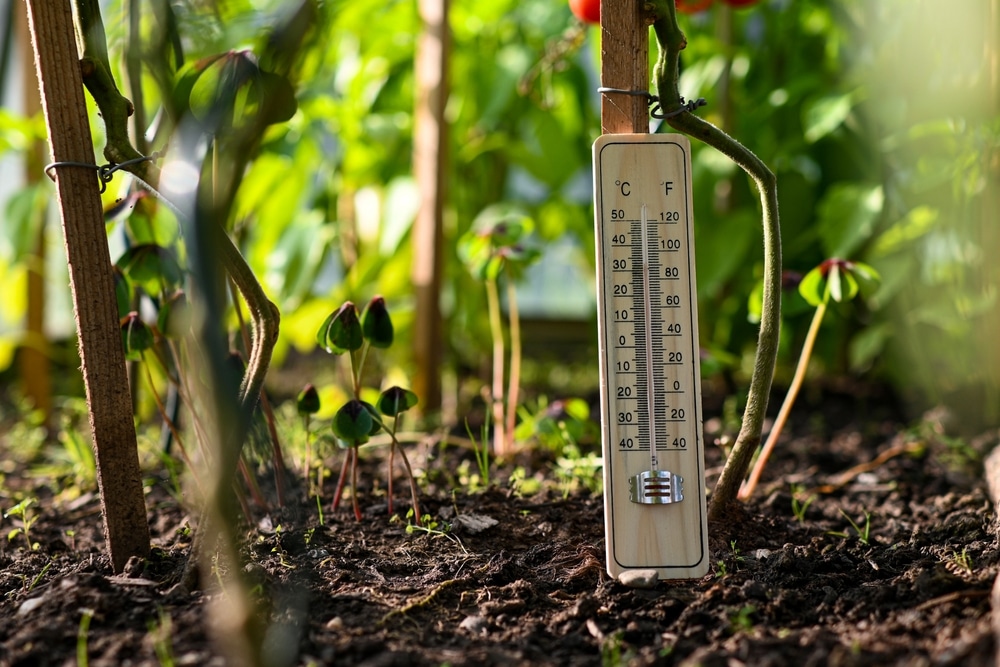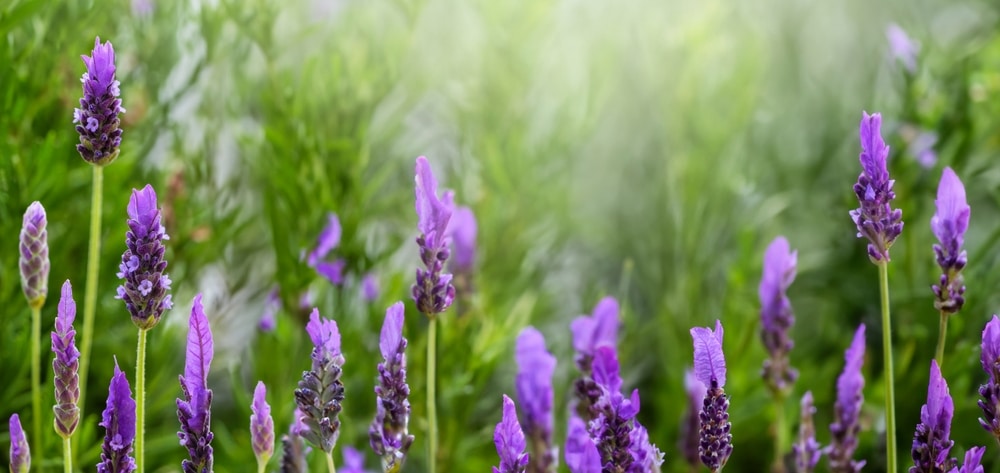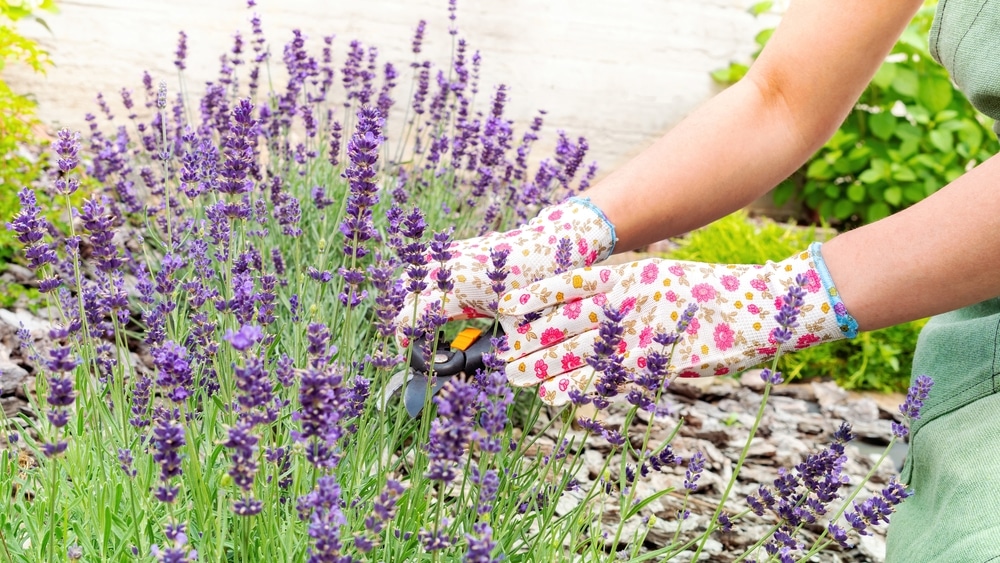Table of Contents
Who doesn’t want a blissful purple garden full of beautiful lavenders all around? Hello to all my gardening pals! It is another great sunny day as we are going to learn some creative planting ideas. If you love a bit of purple around your backyard space you must go for some lavender action. But how to plant it? Worry not, we are going to learn all about growing lavender from seed and create some magic! Now, lavender is a popular herb in gardens worldwide due to its calming properties and fragrant blossoms. Although it may be tricky, growing lavender from seed is a rewarding experience. For all of you gardening lovers gardening can always be one of the most soothing therapeutic experiences ever. Moreover, if you love nature, the more you like to live around plants. Let us learn get some insights into the seeds of lavender.
The Seeds of Lavender
Now, what is the sowing of lavender seeds? Germinating lavender seeds is a delicate process because the seeds are small and fragile. Instead of covering these seeds, usually black or dark brown, gently press them into the dirt so they can grow. To improve germination rates, it is possible to mimic winter conditions by storing the seeds in the fridge for a few weeks, known as cold stratification. Germinating lavender seeds takes two to four weeks in soil that is somewhat acidic, has good drainage, and receives regular, ample sunlight. Vigorous lavender plants require special attention during this early stage of their development. Let us first learn about the right time to grow your lavender.

When to Grow Lavender from Seed?
You already are aware of the fact that you must require a seed to grow lavender plant. However, there is a specific time too when you need to grow your lavender. Growing lavender from seed requires patience and careful planning. Lavender seeds need specific conditions to germinate and thrive. Here’s what you need to know about timing;
- Best Time to Plant Lavender Seeds: Lavender seeds should be started indoors about 8-10 weeks before the last expected frost. This allows the seedlings to establish themselves before being moved outside.
- When to Grow Lavender from Seed: Begin the seed-starting process in late winter to early spring. This timing ensures that your lavender seedlings are ready to be transplanted outdoors once the danger of frost has passed.

7 Steps to Grow Lavender from Seeds
Here is a look at the 7 ways to grow lavender from seeds inside your garden.
Step 1: Cold Stratify the Seeds
Before planting, cold stratify lavender seeds to increase germination rates. This mimics winter conditions and breaks seed dormancy.
Step 2: Use a Seed Tray
Start lavender seeds in a seed tray with a well-draining mix. This allows for easy management and monitoring of seedling growth.
Step 3: Provide Adequate Light
Use grow lights to ensure lavender seeds receive the necessary light for germination. Position the lights close to the seeds and maintain a consistent light schedule.

Step 4: Maintain Proper Temperature
Keep the seed-starting environment warm, ideally between 65-70°F (18-21°C), to encourage germination.
Step 5: Transplant Carefully
Gradually acclimate lavender seedlings to outdoor conditions by hardening them off before planting in the garden.
Step 6: Ensure Well-Draining Soil
Lavender requires well-draining, alkaline soil. Amend your garden soil as needed to provide the best growing conditions.
Step 7: Protect Young Plants
Shield young lavender plants from frost and extreme weather conditions using frost covers or by planting them in sheltered spots.

Types and Varieties of Lavender to Grow
Now, let us take a look at some of the varieties of lavender you can grow in your backyard.
English Lavender (Lavandula angustifolia)
- Compact, fragrant, and ideal for various climates
- Varieties: Hidcote Blue (deep purple flowers) and Munstead (intense fragrance)
French Lavender (Lavandula dentata)
- Frilled petals and a citrus-like scent, perfect for warmer climates
- Varieties: Riviera (compact, vibrant) and Provence (long flowering)
Spanish Lavender (Lavandula stoechas)
Pineapple-like flowers with bracts resembling rabbit ears
Varieties: Otto Quast (dense spikes) and Anouk (compact growth)
Lavandin (Lavandula x intermedia)
- Hybrid with high oil content, often used commercially
- Varieties: Grosso (long stems, high oil) and Super (large blooms)
Pygmy Lavender
- Dwarf variety suitable for containers and small spaces
- Varieties: Pygmy (miniature growth, sweet fragrance)
Some Tips for Growing Lavender
Here are some effective tips to grow lavender in your garden perfectly.
- Avoid Overwatering: Lavender thrives in dry conditions. Ensure well-drained soil and allow it to dry between waterings to prevent root rot.
- Protect from Frost: Use frost covers if planting outdoors before frost has fully passed to protect young lavender plants.
- Maintain Alkaline Soil: Lavender prefers a pH of 6.5 to 8.0. Add lime if needed to keep the soil slightly alkaline.
- Regular Pruning: Prune lavender regularly to encourage bushier growth and prevent woody, leggy stems.
- Watch for Pests: Although lavender is pest-resistant, it can attract aphids or spider mites. Neem oil is an effective treatment. Whether you’re planting clover or any other plant, you need to be aware of pests.
- Mulch Wisely: Apply mulch around lavender to retain moisture and suppress weeds, but keep it away from the plant’s base.
- Fertilize Sparingly: Use a low-nitrogen fertilizer in early spring if necessary.
Uses of Lavender
Lavender, known as “Lavandula,” offers numerous uses in both cooking and crafting. Its sweet, herbal flavor enhances a variety of dishes, from desserts to sauces. Here are some ways to use lavender;
- Culinary Uses: Add lavender to desserts, beverages, sauces, or marinades. It can replace rosemary in recipes (use twice as much lavender).
- Grilling: Toss lavender stems on hot coals for a smoky, herbal flavor in meats and vegetables.
- Bouquets: Use fresh or dried lavender to create beautiful bouquets or wreaths.
- Crafting: Separate buds for sachets, potpourri, soaps, or candles.
- Aromatherapy: Make lavender oil using buds or flowers and a few simple ingredients.
Lavender’s versatility makes it a wonderful addition to the kitchen, craft projects, and wellness routines.

Final Thoughts
Summing up, lavender, when grown from seed, is an extraordinarily satisfying plant. Growing lavender plants from seed requires special care, including planting the seeds early, exposing them to cold stratification, and providing them with ample light. If you want hardy lavender, like “Hidcote Blue,” wait until the risk of frost has gone before planting. Planting lavender seeds in slightly acidic soil and giving them plenty of sunshine will grow into fragrant blossoms.
In conclusion, the beauty of growing lavender from seed lies in its wonderful perfume, which can be enjoyed indoors in a seed tray or outside the garden.
Take in the purple magic of lavender in your very own garden!
